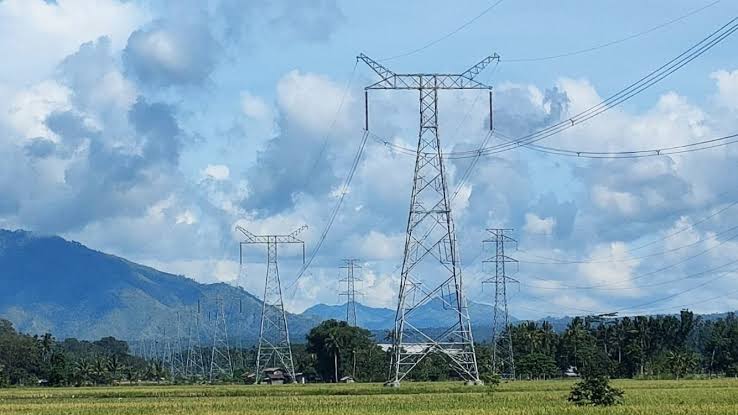(First of 3 Parts)
In a significant move to address longstanding power issues, the Philippines is set to connect the island of Mindoro to the country’s main power grid through an ambitious submarine cable project.
The Batangas-Mindoro Interconnection Project (BMIP), spearheaded by the National Grid Corporation of the Philippines (NGCP), promises to revolutionize electricity supply in Mindoro, potentially ending years of energy insecurity and high costs for its residents.
The project, which aims to link Mindoro to the Pinamucan 230-kilovolt substation in Batangas province, has been a “long dream of the people of Mindoro,” according to Senator Win Gatchalian, who chairs the Senate Committee on Energy.
“The Batangas-Mindoro Interconnection Project is a crucial step towards our vision of a more interconnected and energy-secure Philippines,” President Ferdinand “Bongbong” Marcos Jr. was quoted as saying.
“This project demonstrates our commitment to bringing reliable and affordable power to every corner of our nation, supporting economic growth and improving the quality of life for our citizens in Mindoro and beyond,” the President said.

During a recent public hearing, it was revealed that the Energy Regulatory Commission had already approved NGCP’s proposal last year, marking a crucial step forward in the project’s realization.
Energy Regulatory Commission (ERC) Chairperson Monalisa Dimalanta revealed that
“The ERC has given its approval for this project, recognizing its importance in addressing the power challenges in Mindoro.”
“We will continue to work closely with NGCP and other stakeholders to ensure that the project meets all regulatory requirements while delivering maximum benefit to the consumers,” Dimalanta said.
For Mindoro, an island of over a million inhabitants known for its pristine beaches and diverse ecosystems, reliable electricity has been a persistent challenge.
Residents and businesses have long grappled with frequent power outages and some of the highest electricity rates in the country.
The island’s isolation from the main grid has forced it to rely heavily on diesel-powered generators, contributing to both environmental concerns and inflated energy costs.
The interconnection project is expected to address these issues on multiple fronts:
- Increased Power Supply: By tapping into the national grid, Mindoro will have access to a more stable and abundant power supply, potentially ending the cycle of brownouts that have hampered economic growth.
- Lower Electricity Costs: Connection to the main grid is anticipated to significantly reduce electricity rates. The current reliance on diesel generators has kept prices artificially high, with some areas paying up to three times the national average.
- Economic Growth: Reliable power is crucial for attracting investments and supporting industries. The project could unlock Mindoro’s economic potential, particularly in sectors like tourism and agriculture.
- Environmental Benefits: Reduced dependence on diesel generators will lower the island’s carbon footprint, aligning with national goals for sustainable development.
However, the project is not without its challenges.
NGCP has outlined an “abbreviated timeline” with completion targeted for 2027, a date that some critics argue is too distant given the urgency of Mindoro’s power needs.
NGCP President and CEO Anthony L. Almeda has said this: “We at NGCP recognize the critical importance of the Batangas-Mindoro Interconnection Project. This is not just about laying cables; it’s about bridging gaps and powering progress. We are working diligently to complete this project by 2027, understanding the transformative impact it will have on Mindoro’s communities and economy.”
“The technical challenges of this project are significant, involving complex underwater cable installations. However, we are confident in our ability to execute this project safely and efficiently,” said NGCP Chief Technical Officer Reynaldo Abadilla. “Our team is employing cutting-edge technology and best practices to ensure the reliability and longevity of this critical power link.”
Environmental concerns about laying underwater cables in sensitive marine areas will also need to be carefully addressed.
The Batangas-Mindoro Interconnection Project represents a critical test case for the Philippines’ efforts to modernize its energy infrastructure.
Success here could pave the way for similar projects in other isolated regions, potentially transforming the nation’s energy landscape.
As the project moves forward, all eyes will be on the NGCP and government agencies to ensure timely implementation.

“DOE fully supports the Batangas-Mindoro Interconnection Project as it aligns with our strategic goal of achieving energy security and sustainability. This project is a testament to our commitment to modernizing the country’s power infrastructure and ensuring that no region is left behind in our pursuit of economic development,” says Department of Energy (DOE) Secretary Raphael Lotilla.
DOE Undersecretary Felix William Fuentebella has pointed out that “this interconnection project is a key component of our broader strategy to strengthen the national grid.
“By connecting Mindoro to the main grid, we’re not just solving a local power issue; we’re enhancing the overall resilience and efficiency of our national power system.”
For the people of Mindoro, 2027 can’t come soon enough.
After years of living with unreliable and expensive power, the promise of stable, affordable electricity offers hope for a brighter, more prosperous future.
Photos courtesy of DOE and The Manila Times









Write Your Comment